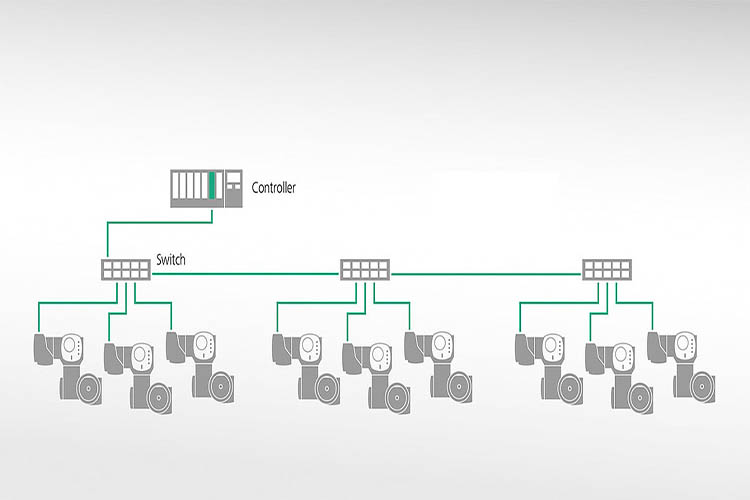Industrial Ethernet has penetrated into the factory floor and has become the preferred communication protocol for automation and control systems. In recent years, the market share of industrial Ethernet has surpassed the traditional fieldbus protocol. This article will take everyone to understand the industrial Ethernet and see what are the advantages and characteristics of the industrial Ethernet.
Understanding of Industrial Ethernet
Industrial Ethernet is an Ethernet technology applied in the field of industrial control. It is technically compatible with commercial Ethernet (ie IEEE 802.3 standard), but the actual products and applications are completely different. This mainly shows that when designing ordinary commercial Ethernet products, it cannot meet the needs of industrial sites in terms of material selection, product strength, applicability, real-time, interoperability, reliability, anti-interference, and intrinsic stability. Therefore, industrial Ethernet, which is different from commercial Ethernet, is used in industrial field control.
Industrial data communication occurs at the routing layer, control layer and sensor layer-each layer requires different levels of real-time information transmission, conflict detection and decision-making (essentially determining the route between any two nodes in advance). Although there are several industrial Ethernet protocols that can support the various communication requirements of the factory, there are four main protocols worthy of consideration are Modbus TCP/IP, EtherCat, EtherNet/IP and Profinet.
Advantages and characteristics of industrial Ethernet
Industrial Ethernet is widely used. Ethernet is a widely used computer network technology. Almost all programming languages such as Visual C++ and VisualBasic support the application development of Ethernet.
Industrial Ethernet has a high communication speed. At present, the fast Ethernet of 10 and 100 Mb/s has begun to be widely used, and the 1Gb/s Ethernet technology has gradually matured, while the traditional fieldbus has a very high rate of only 12Mb/s (such as Siemens Profibus-DP). Obviously, the speed of Ethernet is much faster than that of traditional fieldbus, which can fully meet the ever-increasing bandwidth requirements of industrial control networks.
Industrial Ethernet has strong resource sharing capabilities. With the development of Internet/Intranet, Ethernet has penetrated into every corner, and users on the network have been relieved of the constraints on the geographical location of resources. On any computer connected to the Internet, you can browse the data of the industrial control field to achieve "Integration of control and management."
Industrial Ethernet has great potential for sustainable development. The introduction of Ethernet will provide the possibility for the follow-up development of the control system. Users do not need to research and invest independently in terms of technology upgrades. For this, any existing fieldbus technology is incomparable.
Industrial Ethernet is a more complicated concept. This article only gives you a brief introduction. If you want a deeper understanding and understanding, you can refer to more information about Industrial Ethernet. What is certain is that industrial Ethernet has many advantages and characteristics, which is why industrial Ethernet can be widely used.




















